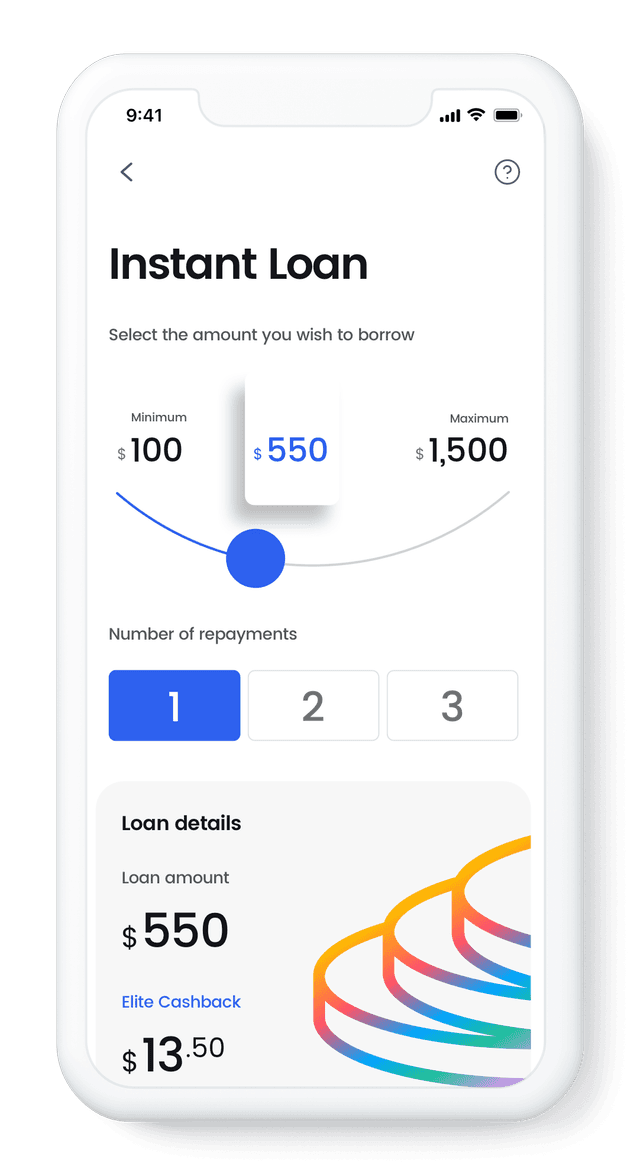Diving into the world of interest rates in Canada might not be your typical coffee table conversation starter, but understanding these rates is as important as knowing when to break out the winter coat. Interest rates affect everything from how much you pay for a mortgage to the return on your savings accounts.
Whether you’re eyeing your dream property or saving for retirement, savvy financial decision-making starts with a solid grasp of interest rates. These figures, set by the Bank of Canada, ripple through the economy and influence spending patterns, investment choices, and even job markets. By decoding Canada interest rates, you can better understand the world of loans, credit, and savings.
Your hard-earned money deserves a more thorough understanding of interest rates than the basic “it’s how much you pay to borrow money” explanation. In this guide, we’ll break down interest rates, including what they are, how they’re determined, and why they matter.
What Are Interest Rates?
Definition of Interest Rates
Interest rates represent the cost of borrowing money or the reward for saving. They are expressed as a percentage of the principal amount for a specified period. Lenders charge interest to compensate for the risk of lending money and the opportunity cost of using the funds elsewhere.
When you need to borrow money, the bank or financial institution expects you to repay the amount borrowed plus interest. When you save or invest, you earn interest over time as a return on your deposited or invested money. This system incentivizes borrowing for important purchases and saving for future needs.
Think of it like this: when you go to a lender for a loan, you are essentially “renting” their money for a period of time. The interest rate is the cost of that rental. If you’re investing, the bank or financial institution is “renting” your money, and the interest rate is your return on that investment. The Bank of Canada interest rate plays a major role here, influencing how much borrowing or saving may cost.
Types of Interest Rates
Fixed Interest Rates | Remain constant throughout the loan term, providing predictable monthly payments. It allows borrowers to manage their budgets effectively without the risk of fluctuating payment amounts. |
Variable Interest Rates | Fluctuate based on market conditions, potentially leading to changes in monthly payments. It can affect budgeting and financial planning. |
Simple Interest | Calculated on the original principal only, resulting in constant predictable interest amounts throughout the term of the loan or investment. |
Compound Interest | Calculates interest on both the initial principal and the accumulated interest, including the exponential growth over time. It can greatly benefit long-term investments. |
How Are Interest Rates Determined?
Role of Central Banks
Central banks, like the Bank of Canada, influence these rates through monetary policy by setting the benchmark rate. This controls the money supply by making borrowing either more or less expensive. It directly impacts economic activity — by adjusting interest rates, the bank aims to stabilize inflation and promote economic growth.
Economic Factors Affecting Interest Rates
Rates are heavily influenced by inflation, GDP growth, and employment rates. High inflation often leads to increased interest rates, while robust GDP growth and low unemployment typically correlate with higher rates as central banks aim to curb an overheated economy.
Impact of Supply and Demand in Lending
Supply and demand for loans and credit significantly impact interest rates. High demand or low supply typically leads to higher rates due to increased competition among borrowers, whereas low demand or high supply may result in lower rates to attract more borrowers.
How Do Interest Rates Affect Borrowers?
Cost of Borrowing
Interest rates influence loan costs by determining how much you’ll pay for borrowing money. Higher rates increase borrowing expenses for mortgages, personal loans, and credit cards. Lower interest rates make these financial products more affordable.
Repayment Impact
A higher interest rate increases monthly payment amounts, making loans more expensive over time. A lower interest rate reduces monthly payments. This eases the financial burden for borrowers and encourages additional borrowing for major purchases or investments.
Understanding APR (Annual Percentage Rate)
The Annual Percentage Rate (APR) represents the true cost of borrowing, including interest and fees. It helps borrowers compare loan options by providing a standardized measure of a loan’s total cost over a year.
Interest Rates & Savings
How Interest Rates Impact Savings Accounts
Higher interest rates increase savings account yields, offering savers better returns on their deposits. Lower rates, on the other hand, result in smaller returns and potentially discourage putting money away in a savings account.
Compounding Interest in Savings
Compounding interest speeds up savings growth by earning interest on both the initial principal and accumulated interest. This large increase positively impacts returns, making it a powerful tool for building your wealth over time in savings.
Different Types of Loans and Their Interest Rates
Short-Term vs. Long-Term Loans
Interest rates for short-term loans are generally lower than those for long-term loans. This is because short-term loans have a quicker repayment period, which reduces the lender’s risk compared to the extended duration of long-term loans.
Variable-Rate Loans vs. Fixed-Rate Loans
Pros of Variable-Rate Loans
Offers lower initial interest rates.
Potential for savings if market interest rates decrease.
Cons of Variable-Rate Loans
Can lead to uncertainty and budgeting difficulties, as borrowers may not know their exact payments in the future.
Risk of rates increasing significantly, leading to higher overall costs.
Pros of Fixed-Rate Loans
Repayment stability, as borrowers know the exact amount due each month.
Simplifies budgeting and protects against future interest rate hikes.
Overall financial peace of mind.
Cons of Fixed-Rate Loans
May initially have higher rates than variable-rate loans, potentially leading to higher overall costs if the market interest rate falls.
Inflexibility means you might miss out on potential savings and benefits from decreasing rate environments.
Secured vs. Unsecured Loans
Secured loans typically have lower interest rates than unsecured loans because they require collateral, reducing the lender’s risk. Unsecured loans don’t require collateral but may have higher rates to compensate for the increased risk to the lender if the borrower defaults.
How to Get the Best Interest Rate

Understanding Your Credit Score
Your credit score significantly impacts the interest rate you'll receive. Higher scores and a more positive credit report generally result in lower interest charges. Lower credit scores can lead to higher rates.
Comparing Lenders
Some tips to compare lenders when seeking out the best rate include:
Shop around and get quotes from multiple lenders. This will help you find the best rate for your situation.
Consider using a mortgage broker who can connect you with multiple lenders and negotiate on your behalf.
Look beyond just the interest rate and consider other factors like late penalty fees, loan terms, and customer reviews.
Negotiating Interest Rates
Leverage your credit score by highlighting your strong financial history and low risk to lenders. Request a rate reduction explicitly and compare competing offers to use as leverage. You should also always ask about any discounts available for automatic payments or larger down payments.
Current Trends in Canadian Interest Rates
Recently, Canadian interest rates have experienced volatility due to economic uncertainties and major global events. The Bank of Canada is now adjusting rates to manage inflation and stimulate growth, leading to fluctuations in mortgage and loan decisions.
Just last week (October 23, 2024), the Bank of Canada cut the interest rate by 50 basis points, from 4.25% to 3.75%. It's important for Canadians to stay informed and monitor market trends when making financial decisions, especially when it comes to borrowing and saving money.
Impact of the Bank of Canada’s Policies
The Bank of Canada's policies set the target for the overnight interest rate, which affects all other interest rates in the country. When the central bank lowers the rate of interest, it becomes cheaper for consumers to borrow money and stimulates good economic growth.
On the other hand, as interest rates rise, borrowing becomes more expensive, which slows down economic growth. This approach helps control inflation and encourages responsible borrowing habits.
Risks and Considerations with Interest Rates
Impact of Rising Interest Rates:
Rising interest increases borrowing costs, leading to higher monthly payments on loans and mortgages. This can strain budgets, reduce leisure spending, and potentially increase default risks, especially for those with variable-rate loans.
Of course, different individuals have different risk tolerances and financial obligations. For example, those with fixed interest rate loans are protected against interest rate hikes during the term of their loan, while those with variable interest rate loans are more susceptible to interest rate fluctuations.
Dealing with Variable Interest Rates:
It's crucial to understand how variable rates can fluctuate and impact personal finances, especially when it comes to interest payments over time. During economic uncertainty, consider refinancing to a fixed rate (if possible), maintain an emergency fund in a high interest savings account, and regularly review the loan agreement so you can adjust your budget accordingly.
How to Manage Debt with High-Interest Rates:
Focus on paying more than the minimum payment.
Prioritize high-interest debt first.
Consider consolidating debt at a lower interest rate.
Create a realistic budget.
Negotiate with creditors for a possible reduced interest rate.
Take Control of Your Financial Future by Understanding Interest Rates
Interest rates can significantly impact your financial decisions; they can affect everything from your monthly budget to long-term financial goals. Understanding rates empowers you to make the best choices for your financial situation and ensures you can adapt to changes in the market.
At iCash, we offer loan options with a transparent interest rate, so you can confidently manage your finances, knowing exactly what to expect from your interest payments. Take control today — apply for an iCash loan and keep your finances on track with confidence.











